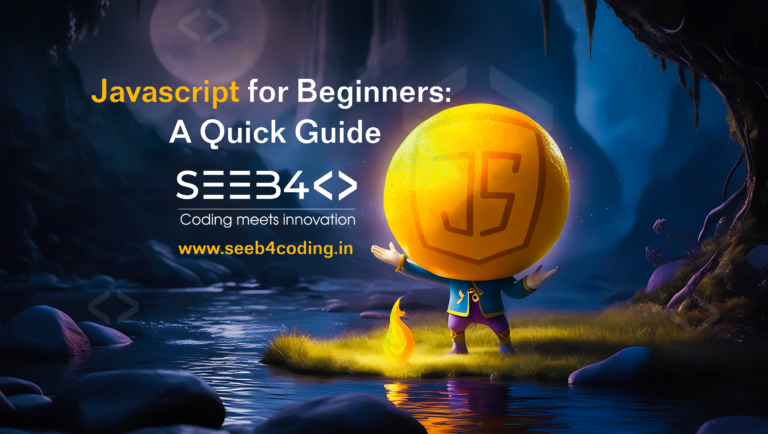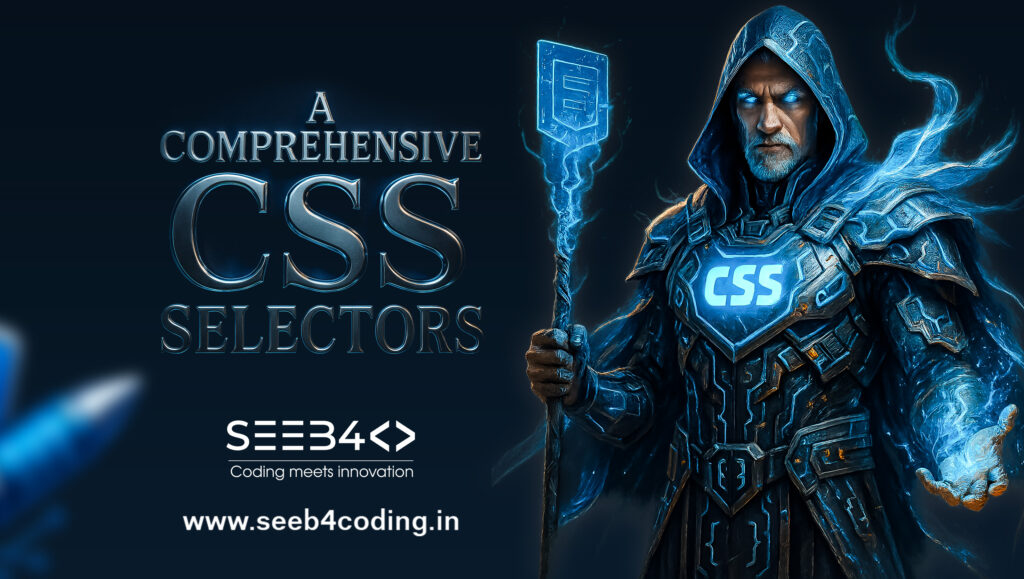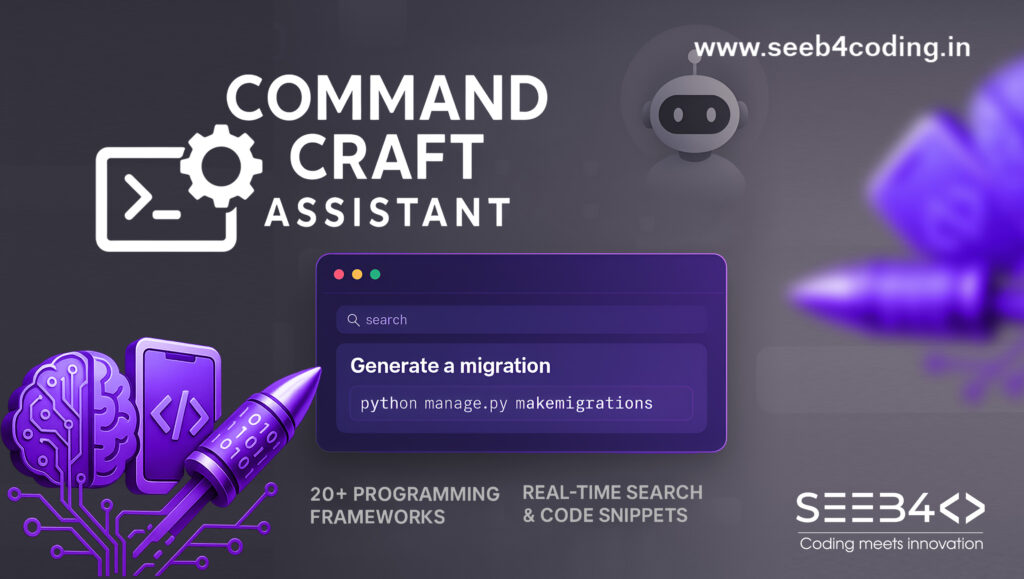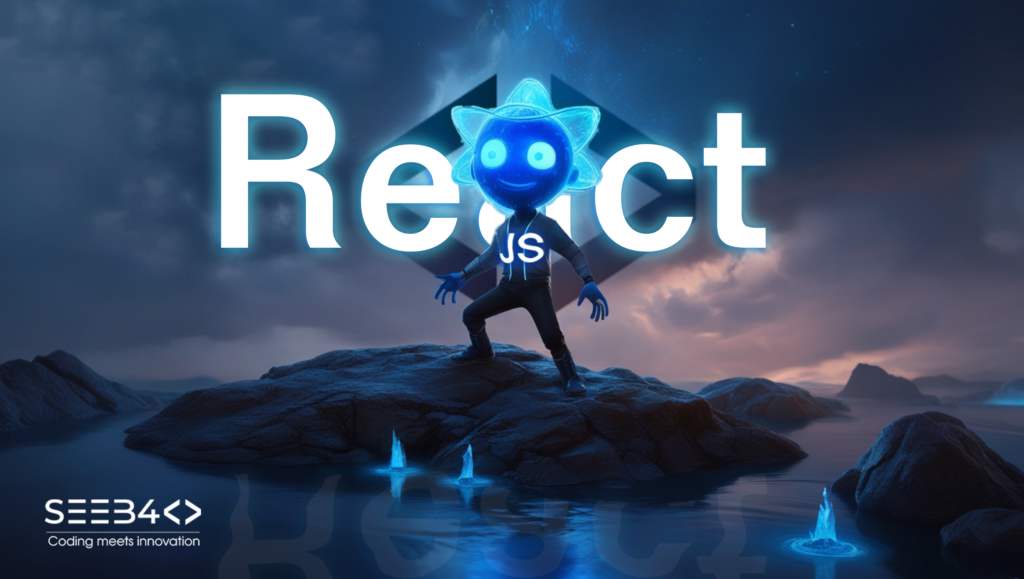JavaScript is the magic behind dynamic, interactive websites. Whether you’re adding animations, handling user input, or creating games, learning JavaScript is a great first step into web development. Here’s a quick guide to get you started!
Why Learn JavaScript?
- Essential for Web Development: Alongside HTML and CSS, it’s a core technology for building websites.
- Interactive: Enables dynamic features like forms, pop-ups, and animations.
- Widely Used: It’s everywhere—frontend, backend, mobile apps, and more.
Try Here: https://seeb4coding.in/js/jseditor/
Basics of JavaScript
1. Hello, World!
Let’s start by displaying a message in the browser console:
<script>
console.log("Hello, World!");
</script>
Open your browser’s developer tools (F12) and go to the Console to see it.
2. Variables and Data Types
Variables store data that your program can use later. There are three ways to declare variables in JavaScript: var, let, and const.
let name = "Alice"; // String
const age = 30; // Number
var isStudent = true; // Boolean
Difference Between var, let, and const
var:
- Function-scoped: The variable is only accessible within the function it’s defined in.
- Hoisting: Variables declared with
varare hoisted, meaning they are “moved” to the top of their scope, but are initialized withundefineduntil assigned a value.
- Can be redeclared and updated.
var greeting = "Hello";
var greeting = "Hi"; // Redeclaration is allowed
let:
- Block-scoped: The variable is only accessible within the block
{}it’s defined in.
- Hoisting: It is hoisted but not initialized, so accessing it before declaration results in a
ReferenceError.
- Can be updated but cannot be redeclared in the same scope.
let name = "John";
name = "Alice"; // Allowed (update)
// let name = "Bob"; // Error (redeclare in the same scope)
const:
- Block-scoped: Similar to let, it is only accessible within the block {}.
- Hoisting: Like let, accessing a const variable before declaration results in a ReferenceError.
- Cannot be updated or redeclared: Once a const is assigned a value, it cannot be changed.
Example:
const age = 25;
// age = 30; // Error (cannot update)
Note: const applies to the variable binding, not the content. For example, objects and arrays declared with const can still be mutated.
const colors = ["Red", "Green"];
colors.push("Blue"); // This is allowed3. Operators
You can perform calculations or manipulate data using operators.
let x = 10;
let y = 5;
console.log(x + y); // 15
console.log(x - y); // 5
console.log(x * y); // 50
console.log(x / y); // 2
4. Conditional Statements
Control the flow of your program using if statements.
let age = 20;
if (age >= 18) {
console.log("Adult");
} else {
console.log("Not an adult");
}
5. Loops
Loops help you repeat tasks automatically. Here’s an example using a for loop:
for (let i = 0; i < 3; i++) {
console.log("Count: " + i);
}
6. Functions
Functions let you group code and reuse it whenever needed.
function greet(name) {
return "Hello, " + name + "!";
}
console.log(greet("Alice")); // Output: Hello, Alice!
7. Arrays
An array lets you store multiple values in a single variable.
let fruits = ["Apple", "Banana", "Orange"];
console.log(fruits[0]); // Output: Apple
8. Objects
Objects store data in key-value pairs, making it easy to group related information.
let person = {
name: "Alice",
age: 25,
isStudent: true
};
console.log(person.name); // Output: Alice
9. DOM Manipulation
JavaScript can interact with the web page (the DOM). Let’s change the content of a webpage dynamically:
<p id="demo">This is a paragraph.</p>
<script>
document.getElementById("demo").innerHTML = "Hello, JavaScript!";
</script>
10. Events
JavaScript can respond to user actions like clicks or key presses. Here’s how you can handle a button click:
<button onclick="alert('Button clicked!')">Click Me</button>
11. Loops & Arrays
You can use loops with arrays to work with multiple values:
let colors = ["Red", "Green", "Blue"];
for (let i = 0; i < colors.length; i++) {
console.log(colors[i]);
}
Final Thoughts
JavaScript is a powerful tool that unlocks interactive web development. By learning the basics of variables (var, let, const), loops, functions, and how to interact with the DOM, you’re already on the path to becoming a skilled web developer. Keep practicing, experiment with small projects, and soon you’ll be building amazing websites and applications!
Happy coding!










